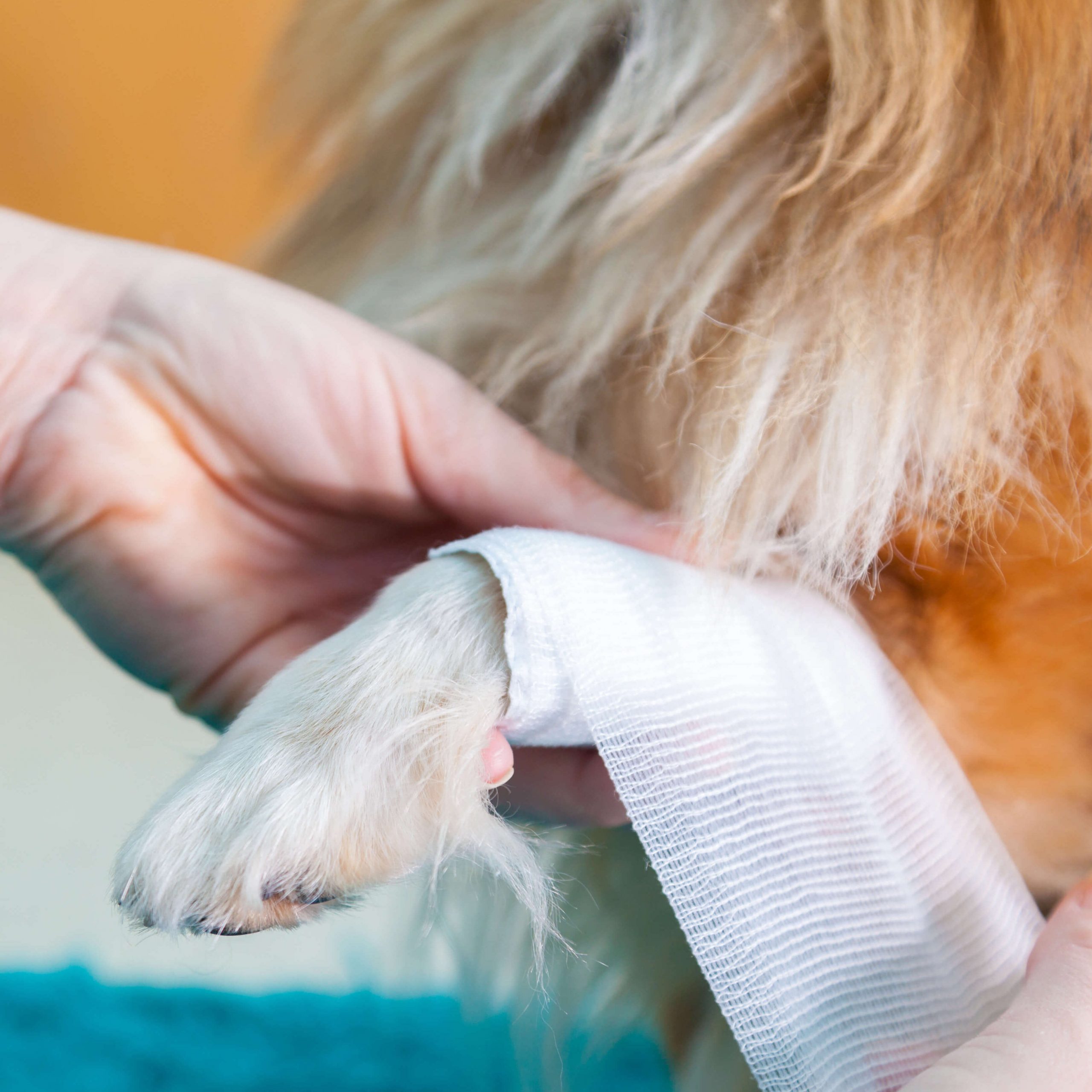Canine First Aid Webinar

First Aid training must be kept up to date and this webinar course can also be undertaken as a refresher/update course for professionals or CPD training.
Students will learn about the principles of First Aid and the main purpose of First Aid. The course covers many types of injury/illness, what should be done in the event of heavy bleeding, electrocution, broken limb, heat stroke, hypothermia, resuscitation, CPR, road traffic accidents, choking, drowning, shock etc.
Students will learn how to transport an injured dog, canine bandaging, muzzling, common sources of poison in the house and garden, bites and stings, fits and much more. This intensive course also includes information about wounds and how to apply dressings. Learn how to improvise items such as stretchers, splints & muzzles and restrain, carry and transport injured canines.
- Understand the basic principles of first aid for dogs
- Understand how to handle an injured dog
- Understand how to use an improvised first aid equipment
- Understand how to administer CPR
Whether you are a dog owner or a professional working with dogs, having a good understanding of canine first aid and how to administer emergency treatment is essential.
This course covers the objectives and rules of first aid, what should be included in a first aid kit and in creating a safe environment. It also shows methods of improvising items such as muzzles, stretchers and splints and explains how to carry or restrain injured animals.
“First Aid” is the initial steps taken following an accident, illness or injury. First aid does not mean making a diagnosis or giving any medication.
Carry out a risk assessment to assess danger to the animal and yourself – is it a suitable place for first aid treatment or can the animal be moved?
In most instances the best actions for first aid of a serious injury are:
• Reducing blood flow from a bleed
• Notifying the veterinary surgery
• Restraining the animal for transport
• Maintaining the animal’s body temperature
• Taking them immediately to the veterinary surgery
Important note: Emergency treatment and first aid for animals should never be used as a substitute for veterinary care. But it may save a dog’s life before you can get them to a veterinary surgeon.
The course includes information on drowning, vomiting and diarrhoea, poisoning, what should be in your first aid kit, and medical emergencies such as bloat. The course also covers burns, bites and stings, shock, electrocution, choking, how to administer CPR including checking a dogs pulse and breathing.
We take a look at various types of fits, hyperthermia and hypothermia and how to restrain and bandage an injured dog and various options for carrying an injured dog. You will practice various dressings for different types of injury.
First Aid actions are only the initial responses to an emergency and should not be thought of as the only actions to take that will ensure the dog’s welfare.
*You will have access to the course for 24 months.
We offer a selection of accredited and employer recognised courses specifically designed for careers working with animals.
If you have any questions about our courses, please contact us.
We’ve assisted many people to achieve their goal to work with animals. Read more about our 5-star reviews and student success stories.
Gain relevant training to achieve your goal to work with animals.

